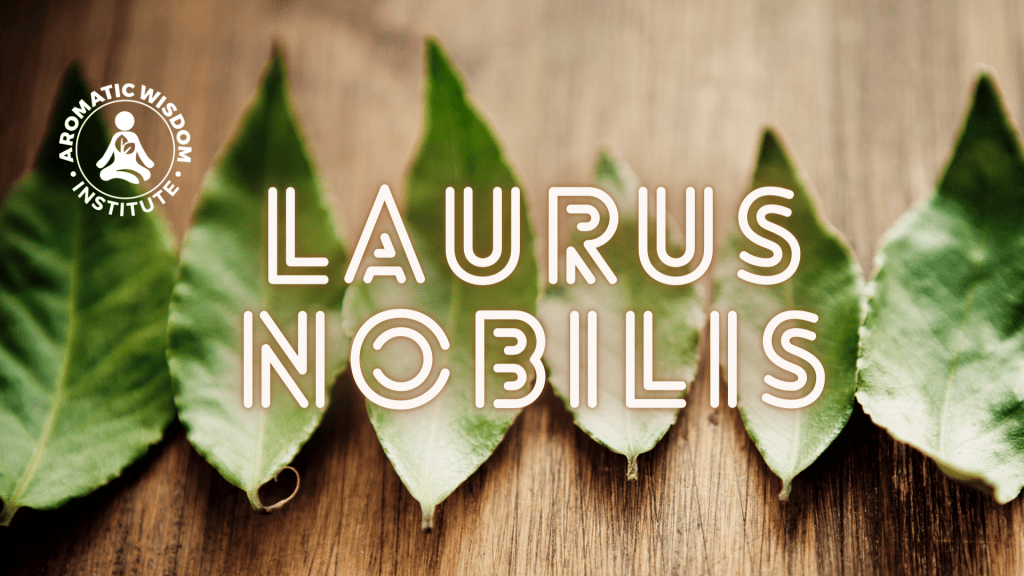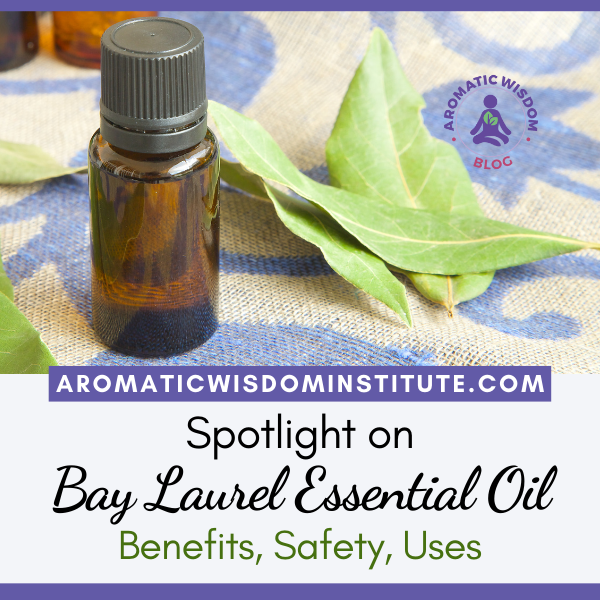Today’s featured essential oil is a favorite for helping with allergies.
I often diffuse it just because
it just smells so darn good!
If you haven’t made the acquaintance of Bay Laurel yet (aka Laurel Leaf), you’re in for a treat!
Essential Oil of Bay Laurel

My Personal Relationship with Bay Laurel
I first encountered this essential oil back in 2010 and it was love at first sniff. Aromatically, people smell this oil and close their eyes and say “ahhhhhh” because it has a beautiful aroma. I often choose this oil for my homemade cleaning products because of the fragrance but also it’s the ability to kill airborne microbes and leave the house smelling great!
Note: Middle-top (To learn more about aromatic notes, this blog post explains them)
The Foundations
- Geographical sources: Morocco, France, Croatia
- Plant Part: Leaves
- Extraction Method: Steam Distilled
- Oil Characteristics: This oil is an unexpectedly delicious combination of sweetness and camphoraceousness.
Primary Chemical Components
- 1,8-Cineole*
- a-Pinene
- a-Terpinyl Acetate
- Linalool
- B-Pinene
(To learn more about Chemical Families, listen to one of my most popular podcasts. Aromatic Wisdom Podcast Episode 008.)
* It is the 1,8 cineole content that gives this essential oil allergy relief and respiratory benefits. It’s best to use Bay Laurel essential oil that contains low levels of this component. This is another reason to use essential oil companies that provide a GC/MS report!
For a more complete list of constituents in Laurus nobilis, see Essential Oil Safety: A Guide for Health Care Professionals
Therapeutic Properties of Bay Laurel Essential Oil
(Here’s a glossary to help you understand therapeutic property terminology.)
- Wonderful to relieve symptoms of seasonal allergies
- Inhibits the spread of microbes
- Helps with pain relief
- Relieves gas cramps
- Helps get rid of excess mucus from the respiratory system
Subtle Properties (emotional and energetic):
Laurel Leaf is very uplifting for the heart, soul, mind, and body.
It has a warming quality that helps to melt an “icy” situation in a relationship and move stuck emotional energy.
Applications
(Here are some guidelines for making your own essential oil blends in a safe dilution.)
- Add it to diffuser blends for an uplifting spicy aroma
- Wonderful in a belly cream to help with cramping and spasms
- I love it in blends that help reduce lymph congestion; in particular Bay Leaf Hydrosol sprayed all over the body after dry brushing is wonderful for lymph health!
Recipe Using Laurel Leaf Essential Oil
Allergy Relief Inhaler Blend (learn how to make a nasal inhaler)
5 drops Laurel Leaf
2 drops Bergamot (phototoxic)
2 drops Orange
2 drops Peppermint
Safety Information
Nontoxic, though it may cause skin irritation and may be skin sensitizing —especially if oxidized. Use in low dilution (5-6 drops to 1 oz of carrier) when applying to the skin, such as in bath or massage oils. Steam inhalations or great but know that it might irritate the mucous membranes. Don’t use with children under 5 years old because of the 1,8 cineole content and use with caution on children between 5-10 years. Listen to the Aromatic Wisdom Podcast Episode 024 to learn to use Safe Aromatherapy for Children.
Interested in more Fragrant Friday Essential Oil Spotlights? Check out the Fragrant Friday Archives
Interested in more Aromatic Wisdom from Liz?
⬇️
References
Essential Oil Safety, Second Edition. United Kingdom: Churchill Livingstone Elsevier, 2014) 323.
###
Updated April 14, 2025





